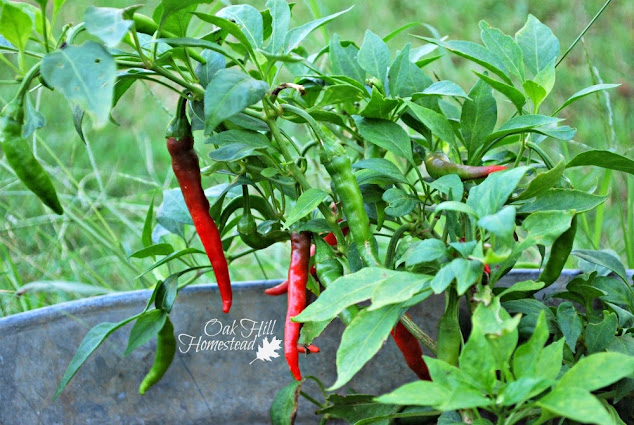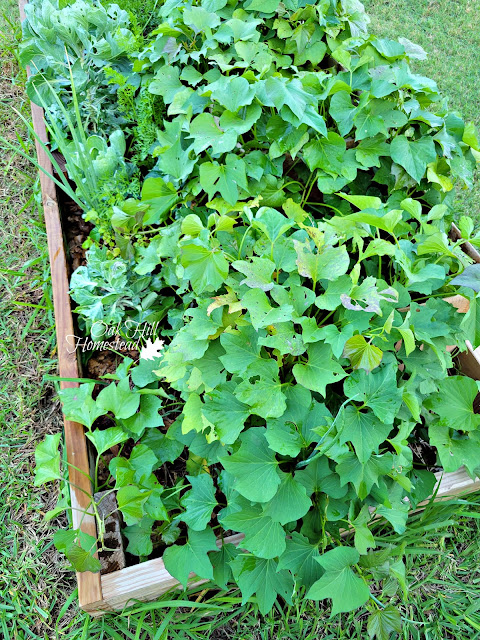Choosing what to grow in a garden can be overwhelming with all the choices that are available. These tips will walk you through the steps of how to choose the vegetables to plant in your backyard garden.
What vegetables should you grow in your garden?
Every spring you can walk into big box stores, farm stores, feed stores and more and find a large display of seeds. Those seed packets with bright, eye-catching photos of gorgeous plants and flowers stir your imagination and beg you to take them home.
Continue reading below, or listen here:
Or you go online to look at seed websites, where even more beautiful photos encourage you to buy their seeds.
It's too easy to pick up packet after packet until your hands are full and you're beyond excited to get them all in the ground..
And when you get home you realize you don’t have enough room to plant them all. Not even close!
It can be hard to choose what vegetables to grow in your garden, whether you're planting in the ground, in raised beds or in containers.
Deciding what to plant is hard.
But … let’s back up a bit. Before you start buying seeds, or trays of those already-started plants in early spring - let’s decide exactly what you should plant!
Not only will it probably save you some money, but it can also help you be more successful at growing and harvesting healthy food for you and your family.
I have 7 tips today to help you decide what to grow in your backyard garden. So grab a pen and paper, a cup of coffee or other beverage, and have a seat. Let’s start at the beginning!
1. What are your favorite vegetables?
First, grow what you and your family like to eat. Your favorite vegetables, your kids' favorite vegetables (and fruits).
That's a no-brainer, right? If your family doesn't like broccoli, don't grow broccoli. Why spend the time to plant it, water it, weed it, nurture it if no one in your family will eat broccoli.
If you love salads, grow a variety of salad vegetables such as loose leaf lettuce and other greens, radishes, green onions and so on.
If your children love to snack on strawberries, add strawberries to your list.
Carrots, beets, sweet potatoes… if you like to eat them, write them down.
You can dream big at this point. We’ll narrow down the list later.
2. What are the most expensive vegetables to buy at the store?
I'm sure you've noticed that some fresh fruits and vegetables are really expensive to buy at the grocery store, even when they're in season.
I love fresh berries, for instance. While strawberries aren't too terribly expensive as long as you buy them in season, raspberries and blackberries are harder to find, and are always high in price.
(I was thrilled to find that we had wild blackberries growing in our back pasture. And when I braved the thorns and chiggers, the occasional snake, and a chance encounter with a coyote that scared us both half to death, I realized just why blackberries are so expensive.)
You can probably grow those same vegetables at home for much less money.
Planting and growing your favorite vegetables and fruits is a great way to save money on your grocery bill, and still eat the foods you love.
Put a star next to those vegetables and fruits on your list.
3. Look up the highest levels of pesticides in vegetables and fruits, and grow them at home
Each year the Environmental Working Group updates their "Dirty Dozen" list of the twelve fruits and vegetables with the most pesticides. [Source]
In 2023, strawberries and spinach had the highest levels of pesticides. Kale, collards and mustard greens are up there too.
So if you eat kale thinking that it’s one of the healthiest foods out there, well, unless it’s organic kale, it’s not as healthy as you might think.
Next on the Dirty Dozen list are some fruits that are grown on trees such as cherries and peaches. We’ll skip over those for today, but then you’ll also find peppers, blueberries and green beans on the list.
Compare the dirty dozen list with the list of items you and your family enjoy eating, and put another star next to your favorite foods that are also on the dirty dozen list.
Grow these foods with the highest pesticide levels in your own garden so you'll know they are organically grown and safe to eat.
Subscribe to The Acorn, Oak Hill Homestead's newsletter and get my ebook "How to Make Vinegar at Home for Pennies" for free.
4. Homegrown vegetables and fruits taste better fresh
Let's face it, canned asparagus tastes nothing like fresh, crisp asparagus harvested at just the right time.
You can roast, grill, sauté, and prepare fresh asparagus in so many ways that are impossible with limp, soggy asparagus from a can. (Try my recipe for cream of asparagus soup here - an absolutely delicious way to enjoy spring asparagus.)
And frozen spinach bears no resemblance to fresh spinach.
In my opinion, homegrown tomatoes are far superior to grocery store tomatoes that are mealy and tasteless.
I'm sure you can think of a few other vegetables and fruits that taste so much better when fresh. If any of those are on the list you’ve made of your favorite foods, put another star next to them. (Or add them to your list!
Now let's narrow down the list a bit
These first four tips have been about adding possibilities to your list, things that you like to eat, that are better fresh, that are expensive to buy, and that contain high amounts of pesticides and other chemicals if they are commercially grown.
Now we’ll narrow down your list a bit. As much as we’d love to grow all the things, there are probably some limitations you’ll need to work around.
5. Best garden vegetables to grow where you live
You’ll need to plant what grows well in your area, and in the amount of time you have available.
Some plants need a longer growing season than others do, and some need cooler temperatures than others. Growing the right plants in your garden can be the difference between success and failure.
In a nutshell, a growing season is the number of frost-free days - or shall we say, frost-free nights in your area. A gardener in a warmer climate will have a longer growing season than someone in a cold climate.
My daughter who lives in the Rocky Mountains has such a short growing season that she can barely grow cherry tomatoes. Trying to grow beefsteak tomatoes, which require much more time to mature than cherry tomatoes, would be a waste of her limited garden space.
Likewise, trying to grow lettuce and peas all summer in my Oklahoma garden would be a waste of my efforts. Lettuce and other cool season crops don't flourish in our very hot summers.
On the other hand, okra grows extremely well in Oklahoma. Rhubarb grows very well in colder climates but it's hard to grow in Oklahoma.
You can find your first and last frost dates here at Dave's Garden, which will also tell you the approximate length of your growing season. This number is important.
You can also find your garden zone here at Garden.Org, although this information applies to trees and landscape plants more than it does to vegetables. Your frost dates are more important if you are growing a vegetable garden.
Seed companies include information on their seed packets or in the description of the average number of days needed until a plant variety is ready to harvest, so you’ll be able to decide if those seeds will grow well for you or not.
But for now, just find the dates of your last frost in the spring and the first frost in autumn, figure out how long your growing season is, and add the information to that list you’re making. You can use it to narrow down your what-to-plant list.
6. Best vegetable plants for a small garden (or containers)
If you have a small garden, you might not want to grow space hogs like squash and melons (although you can grow those plants vertically on a sturdy trellis to save space).
For instance, watermelon vines can grow 3-6 feet long, but some varieties can reach 15 feet or longer. Butternut squash vines grow 10-12 feet in length and send off branches that go off in different directions and sprawl all over the yard.
Or if your garden consists of containers, choose smaller varieties that are better suited to small spaces. You'll find loads of information in my post on growing vegetables in a container garden.
Read Grow a Mini Salad Garden for a list of lettuce varieties that will grow well in a small garden or in containers - and where to buy the seeds.
7. Vegetable plants grow best in full sun
Most fruits and vegetables grow best in full sun, so if your garden space is less than ideal, you’ll need to choose plants that can tolerate some shade.
The general rule of thumb is that If you’re growing a plant for the root, like beets, or for the leaves, such as lettuce, those plants can generally grow in partial shade, but if you’re growing a plant for its fruit, including tomatoes, peppers, cucumbers, squash and so on, you’ll need to plant them in full sun.
So if your garden is shaded by several big old oak trees, you might not be able to grow tomatoes successfully.
If this is a consideration in your backyard, go through your list and mark the fruits and vegetables that might not grow well in your garden’s location.
My ebook How to Grow Vegetables and Herbs in a Shady Garden will show you which vegetables to grow in shady areas, and will help you boost the sunlight you have, even if it isn't full sun.
Now you know!
After comparing your list of what you'd like to grow with the limitations you may face, you should have a good idea now of what vegetables to grow in your own garden.
Where I buy my seeds
I buy most of my seeds from Mary's Heirloom Seeds.
Mary sells over 700 varieties of open-pollinated, heirloom seeds. I love supporting small businesses, and I've been very happy with the quality and germination of the seeds I've ordered from Mary.
You can read about why heirloom seeds are important in your garden in this guest post from Mary.
If Mary doesn't carry a specific variety that I'm looking for, I check Baker Creek Heirloom Seeds. They also have a large selection of open-pollinated, heirloom seeds.
Learn about the nine warm-weather vegetables I recommend growing in raised beds for beginners, and the one popular summer vegetable that I don't recommend.
For even more information
Here's how I keep my seeds organized so I don't end up with six kinds of tomatoes and no carrot seeds.
If you don't use all the seeds in your packets this year, here's how to store them correctly so you can plant them next year.
Common garden words and phrases for beginning gardeners
Learn the steps to planning and planting a homestead orchard in this post.
Need more inspiration to decide what you should grow in your garden? Sixty gardening experts share their advice and their favorite vegetables in this post.
For more gardening and homesteading posts like this, subscribe to my weekly-ish newsletter The Acorn, and join me on Facebook, Instagram and Pinterest. I'd love to see you there!


















